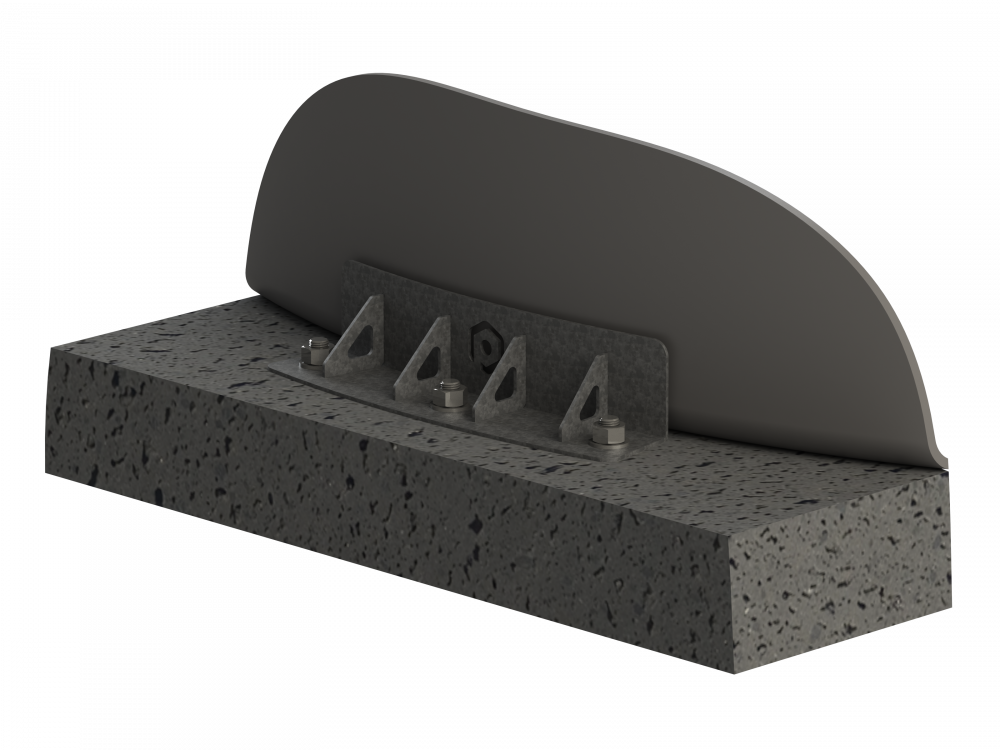Friday, 1 August 2025 Knowledge Articles, News Articles
What is a Seismic Restraint, and why do I need one?
Restraints optimise the safety of your industrial liquid storage.
Industrial liquid storage must be robust and safe. While all liquid storage tanks in all settings must be dependable, industrial tanks must be highly resilient, given the nature of what they contain. Many industrial tanks store stormwater and wastewater, but just as many are used for chemical storage or for providing water for essential activities, such as firefighting. High design and manufacturing levels are one piece of the equation when seeking a solution for trustworthy liquid storage – suitable materials, and seismic restraints are other pieces.
In New Zealand, we must consider our seismic history when discussing industrial liquid storage. GeoNet calculates that New Zealand should experience 50 magnitude 5 earthquakes and two magnitude 6 earthquakes each year, four magnitude 7 earthquakes per decade, and a magnitude 8+ earthquake every century. We're an earthquake-prone country, making liquid storage a more challenging proposition.
Poly storage tanks are universally accepted as being best suited to handle earthquakes. The flexible nature of poly tanks makes them far more ductile than any other material, including concrete and fibreglass; in other words, poly storage tanks can better absorb the stresses and forces of a seismic event. A recent example is the 2016 Kaikoura earthquake that badly damaged the concrete tanks that made up the community water scheme in the Marlborough settlement of Ward. To safeguard water storage after the quake, the concrete tanks were replaced with eight 30,000 litre Promax poly tanks, with this material chosen for its ability to better withstand considerable seismic activity.
Seismic restraints add another layer of safety by acting as a set of anchors for large industrial storage tanks. A series of restraints around the tank's base are bolted into a concrete pad to hold the tank in place and prevent movement during an earthquake or other events, including cyclones and floods. A poly tank set solid and immovable at the base, and with flexibility and durability throughout the rest of the structure, appeals as the safest and most robust option for liquid storage.
This is ideal for industrial tanks, with residential tanks also capable of being anchored using restraints and braces on a smaller scale. For example, the Promax Slimline Seismic Bracing Set for 3,000 and 5,000 litre tanks is designed and built to meet virtually all seismic loading requirements within NZ. Meanwhile, all Promax Slimline tanks feature in-built seismic restraint systems for added stability in residential applications.
Promax Seismic Restraints for industrial tanks perform a vital function and are rated highly enough to be used in buildings with Importance Levels (IL) 1, 2, and 3. Importance Levels are determined according to a building's function, occupancy, and consequences of failure during a seismic event. The building code defines the criteria for IL 1, 2 and 3 as follows:
- IL1: Buildings posing low risk to human life or the environment, or a low economic cost, should the building fail. These are typically small non-habitable buildings, such as sheds, barns, and the like, that are not normally occupied, though they may have occupants from time to time.
- IL2: Buildings posing normal risk to human life or the environment, or a normal economic cost, should the building fail. These are typical residential, commercial, and industrial buildings.
- IL3: Buildings of a higher level of societal benefit or importance, or with higher levels of risk-significant factors to building occupants. These buildings have increased performance requirements because they may house large numbers of people, vulnerable populations, or occupants with other risk factors, or fulfil a role of increased importance to the local community or to society in general.
Every component that contributes to its ongoing operation in such buildings, even after a significant seismic or weather event, is vital. This further highlights the importance of seismic restraints in making industrial storage tanks as safe and secure as possible.
Major earthquakes still occur in regions with a history of lower seismic activity, and the events in Christchurch acted as a stark reminder of this. Throughout New Zealand, there is no room for complacency when it comes to securing liquid storage tanks – and when it comes to industrial storage, there is no margin of error anyway. In this light, seismic restraints are not just a sensible way to enhance safety but also an essential one.
Ready to enhance your liquid storage safety? Contact our team to explore Promax Seismic Restraints for industrial tanks.

